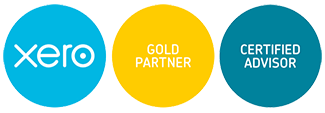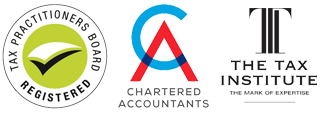Single Touch Payroll (STP) – the direct reporting of salary and wages, PAYG withholding and superannuation contribution information to the ATO – comes into effect from 1 July 2018.
FOR EMPLOYERS
Employers with 20 or more employees at 1 April 2018 must use standard business reporting-enabled software from 1 July 2018. The head count for ‘20 employees’ includes full-time, part-time, casuals (who worked any time during March), employees based overseas, or on paid or unpaid leave. Directors and independent contractors are excluded from the count. For businesses that are part of a wholly owned group, the total number of employees across the group is used (i.e., if the total number of employees employed by all member companies of the wholly-owned group is 20 or more, all group members must use STP).
STP is currently voluntary for businesses with less than 20 employees although proposed reforms seek to extend the reporting system to all employers by 1 July 2019, regardless of the number of employees.
WHAT MUST BE REPORTED
STP requires PAYG withholding and superannuation contribution details to be reported to the ATO as payments are made to employees or superannuation funds.
When it comes to PAYG withholding, employers will report details of salary and wages paid to employees as well as the PAYG withholding amount at the time the payment is made to the employee. Employers have the option of paying the PAYG withholding liability at the same time, although this is not compulsory.
Payments that must be reported include:
- Salary & wages
- Director remuneration
- Return to work payments to individuals
- Employment termination payments (ETPs) – not compulsory if the employee has died
- Unused leave payments
- Parental leave pay
- Payments to office holders
- Payments to religious practitioners
- Superannuation contributions (at the time the payment is made to the fund).
The Government intends to extend STP to salary sacrificed amounts in the near future although these reforms are not legislated.
AN END TO PAYMENT SUMMARIES?
While not compulsory, employers can choose to include reportable employer superannuation contributions and reportable fringe benefit amounts. These payments are reported either at the time the payment is made or through an update event. If these payments are included, the employer will not need to provide payment summaries as employees are able to access their live data through myGov.
If your business does not report through STP or does not finalise its reporting, payment summaries are still required.
NEW EMPLOYEES
If your business utilises STP, when a new employee joins they have the option to electronically complete a pre-filled Tax file number declaration and Superannuation standard choice form online instead of completing the form for you to lodge with the ATO.
EXEMPTIONS
Some exemptions exist for STP for rural employers that do not have access to a reliable internet connection, and employers that employed a group of people during the year for a short period of time, such as seasonal workers.
FOR EMPLOYEES
While the Government and ATO are promoting STP as a way to improve the efficiency of payroll processes and meeting reporting obligations (i.e., cutting down on duplication of work etc.,), there is also a clear benefit to the ATO and Government in implementing this system. One advantage is that the ATO will have early warning of businesses that are finding it difficult or simply failing to meet their PAYG withholding and superannuation guarantee obligations. This should have a flow on benefit to employees who might otherwise miss out on benefits to which they are entitled.
If you are registered with myGov and your employer reports using STP, you will be able to see your year-to-date tax and super information online.
Click Here for Single Touch Payroll – Checklist
Click Here to go to the ATO Website to watch a webinar
Please feel free to contact our office if you have any questions or if you require any assistance.


